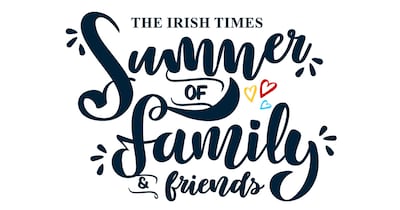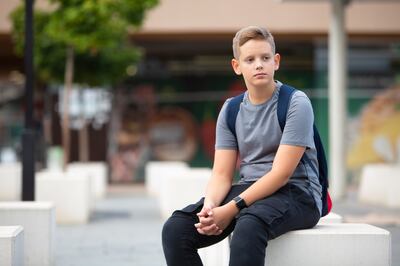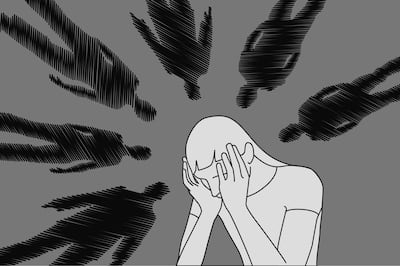
Teenage years are fraught with hormones and change – the biggest change possibly being the move to secondary school and the huge adjustment that goes with it. It’s a time of vulnerability and scrambling to find your place in the world, where fitting in is the goal and being different brings a whole heap of challenges.
For teenagers experiencing bullying, it can be a particularly lonely and devastating time, not helped by social media, which has added a new dimension to the nightmare.
‘It was just a kiss’
Fifteen year old Tara’s experience of bullying started off as a kiss with a boy at an event and escalated to the point An Garda Síochána needed to get involved.
The boy who Tara kissed had a couple of drinks, she explains. Another person decided to film the kiss. “It was just a kiss,” Tara clarifies. The two spent much of the rest of the evening in each other’s company.
READ MORE
“He was snapping [sending Snapchats to] her the night after the event. They chatted all weekend after the event,” Tara’s mother, Ann explains.
When Tara went to school the next morning, however, she met a very different reception. “Everyone was telling me not to talk about it. He didn’t remember me and he didn’t remember anything that happened. He found out from the video that the other guy took that we had kissed,” Tara says.
“I was alone. None of my friends were in school. I tried to confront him saying: ‘Why am I having people tell me that I assaulted you, that I took advantage of you?’ And he basically went: ‘Well, did you?’
“I basically was isolated. I was sitting in locker rooms, at my locker by myself [during break time] every day. I would walk into a room and conversations would stop. I would sit down next to someone in class and they wouldn’t say anything to me.”
Ann says: “Tara was made out to be the poster girl for ‘it happens to boys too’.” Co-ordinated targeted social media posting by groups of teenagers followed.
[ How often do we give our children mixed messages?Opens in new window ]
Her mother approached the school several times. “They were fairly sympathetic but they did say this had happened at an out-of-school event so they couldn’t do a whole lot. They said they could have a word with the people who were giving her a hard time in school. We were reassured several times that had happened. But it didn’t stop.”
The social media campaign against Tara intensified and her parents decided to approach gardaí. The school worked alongside the officers who visited the home of the main culprit, she says. This finally put an end to it, Ann says.
Gentle and soft
Alison’s son Carl was bullied by a girl, which she explains adds a different dimension to things. “Carl has always been gentle and soft and compassionate and in regards to bullying, I think that has led to him being an easy target,” she says.

Carl is from a different country and he has been “teased” since he arrived here for this, Alison says. “Relentlessly”, to the point that he was “embarrassed” to be from the country, his mother explains.
It has extended beyond this, however. For the first few months of this year, “he was coming home with most of his lunch not eaten. I asked him what was going on and it took him a long time to tell me. It turned out someone was taking his lunch and not giving it back to him until the last couple of minutes. They were doing the same thing with his beaker.”
Mark had mentioned he was going to take his own life – I confronted him and he handed me the rope that he had for it
Alison wrote to the third year head about the situation. “The reply was, ‘What do you want me to do about it. I can’t go and sit at the table with them.’”
His mother says she informed the school that either they do it or she would go into the school and do it. “Stand back during lunchtime, somewhere it’s not obvious and watch what’s going on. The year head finally agreed to sit in and caught this girl doing it.”
Carl has dyspraxia and Alison feels he didn’t realise he was being bullied. She says her son can be socially awkward and doesn’t always read situations accurately, sometimes believing people to be laughing with, rather than at, him.

‘Tramp and slut’
Jane’s teenage son Mark was bullied after difficulties his sister had at school, she says. The problems for Mark continued even when his sister had left the school.
His sister was called “a tramp and slut,” Jane says. “Mark tried to defend her. He hates seeing anyone being harassed.”
Her son was also friends with a student in the year above him, who was autistic. “That was one of the reasons Mark was bullied,” his mum says.
It was all name calling in Mark’s case. “It got quite bad to the point I ended up in Pieta House with him. I got a phone call from one of the teachers one day to say that Mark had mentioned to a couple of girls that he was going to take his own life. I confronted him that day and he went up to his room and he came down and he handed me something that he had for it.”
Jane moved Mark to a different school.
Useful contacts
- Pieta House (1800 247 247)
- Jigsaw (116 123)
- Childline (1800 666 666)
- Barnardos has resources about bullying for young people
- Serious instances of bullying may be reported to Tusla or the Garda















